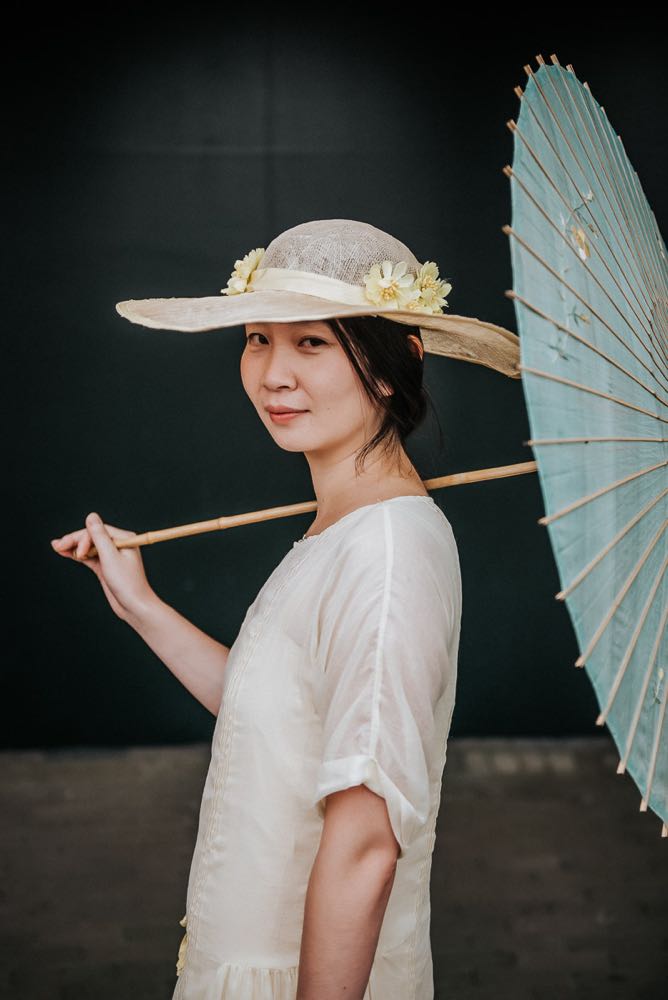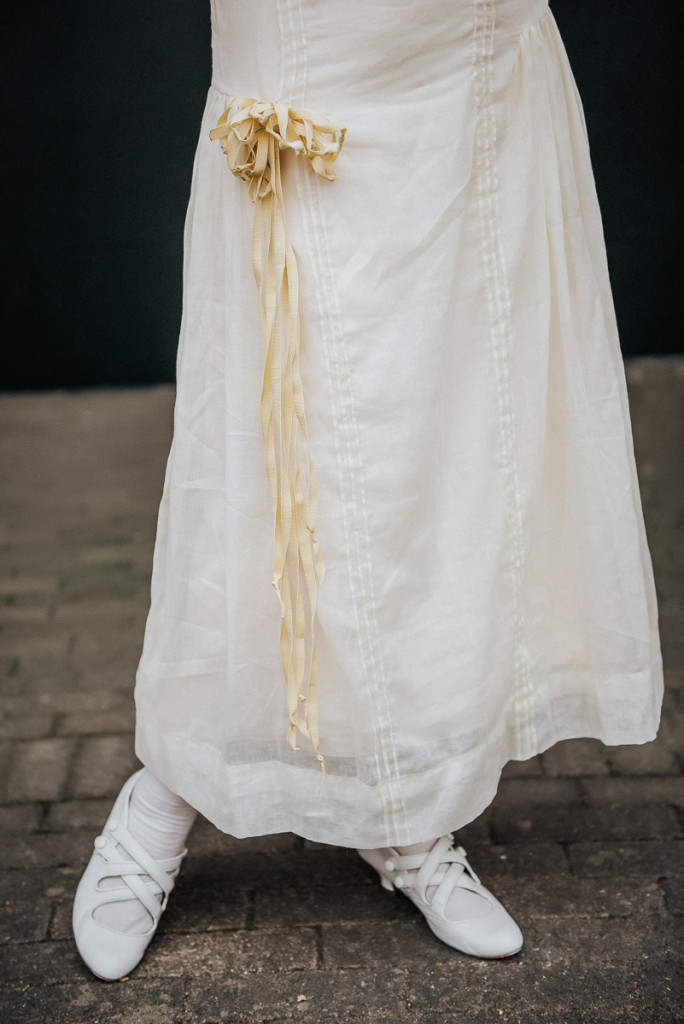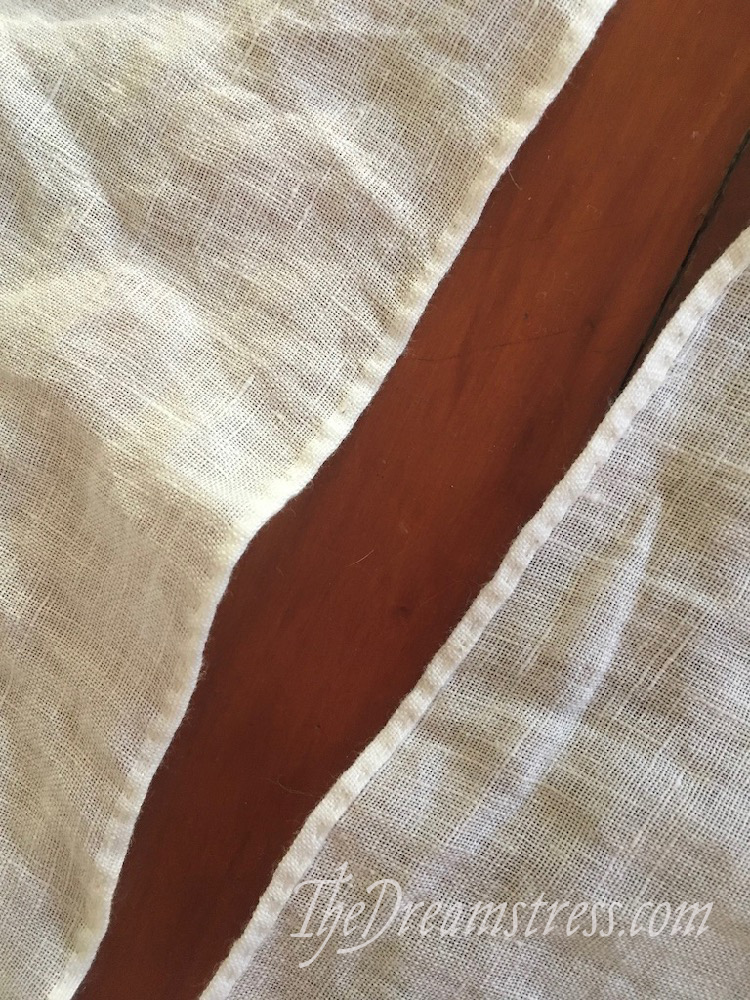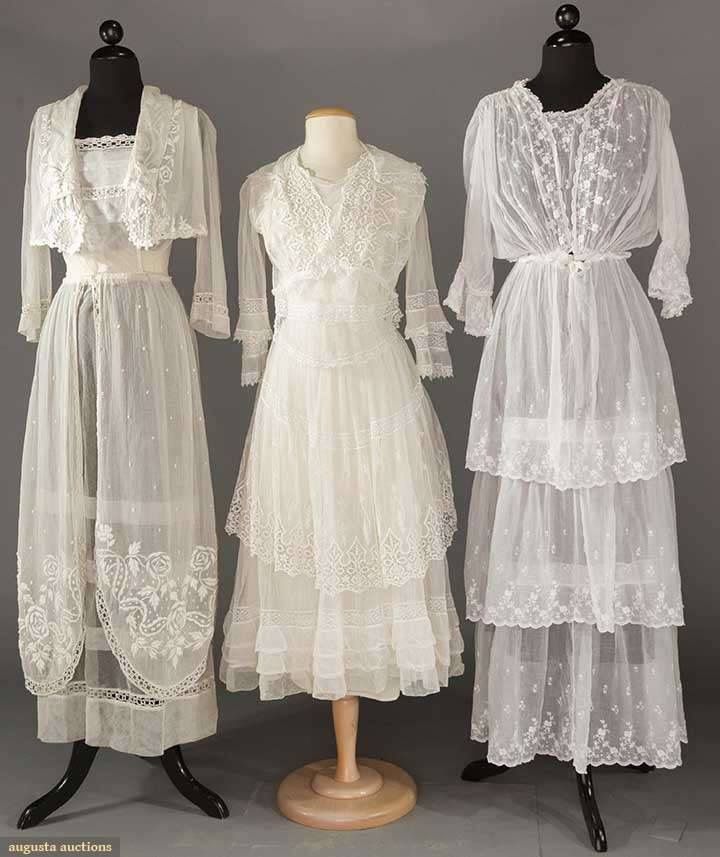A Note: this post is a refresh and an update of a post that was originally written in 2010
In response to my post on the history of muslin, the Baroness von Vintage has asked what the difference between voile, lawn and muslin is.
The problem with defining fabrics is that fabrics are an art, not a science. You can clearly define the chemical makeup on anything, but strictly breaking all art into particular periods or definitions? Not as easy. Especially since definitions have varied throughout history, and vary across countries today. I’ll try though.
All three are lightweight fabrics, with some element of sheerness. Today they are usually made of cotton, but you also fine them in linen.
Basically, if it has an open weave, it is muslin (except in the US, where muslin is a cheap, plain fabric, and muslin gauze is an open weave). This weave is also called mull or book muslin. It’s just a little tighter and smoother than cheesecloth.
If it is very tightly woven with fine, glossy threads and no surface texture, it is lawn.
If it has a very soft drapey hand, with some surface texture and a weave that is neither particularly fine or loose it is voile.
Tomorrow I’ll give you the long (complicated) explanation of the differences between the three.
Some examples of muslin/muslin gauze:



This 1790s ensemble is made from what we would now call muslin: it was probably called mull at the time.


Some examples of lawn:
An Edwardian blouse in lawn:

A lawn petticoat:

Some examples of voile:
My replica 1860s petticoat in embroidered voile:

Pintucks on voile:

And an example of how you can’t always quite tell…
These three lingerie frocks could be either muslin or voile:


Thanks Dreamstress for taking the time and trouble to do this. Even though I think I know, I am looking forward to the 'long' explanation as the description and naming of many fabrics does seem to change from one country or region to another.
Thank you for this, it has really helped me. I'm English, but read lots of American blogs, and the difference between the fabric terms can get really confusing.
What is sheer cotton fabric with a bit of twist to fibers, the warp I think, called if not voile? The striped fabric you describe is what I call dimity.
In case anyone was wondering (probably not, but anyway) mull is called book muslin because it is used to line the spines of books during the binding process.
Thank you, that is interesting!
interesting post. i couldn’t with any assurance tell the difference between those three lingerie gowns’ fabrics, assuming they were of different fabrics. i’ve been familiar with the three terms (muslin, lawn, and voile) all my life, but would have been hard-pressed to define them accurately. i knew they were all finely-woven cottons (normally?) but any identification of fabric i was doing must have been intuitive. my only real sense was that voile was more sheer than lawn, but even that may be erroneous.
I have the hardest times telling cotton lawn from cotton baptiste. I have both fabrics in white in my stash, and I don’t know which is which. (P.S. I’m an American, if that makes a difference in fabric nomenclature.)
You’re not alone there! The distinction between lawn and batiste is super thin – what some shops sell as batiste, others sell as lawn. I don’t think there’s a universal agreement about what degree of smoothness, thread count, weight, etc makes it lawn vs. batiste.
I was thinking the same thing. It gets even more confusing when you’re buying in physical shops that don’t label their fabrics like that so you’re completely on your own. 🙂
What Liberty sells as “Tana Lawn” is much more substantial than what I think of as batiste. It’s not sheer, and has a sheen. So yes, super confusing.
And what they sell as Tana lawn today is much heavier and rougher than vintage Liberty lawns, when you find them 🙁
I want all the lingerie dresses…
There’s a book called ‘Fabric a la Romantic Regency’ A glossary of fabrics from original sources from 1795-1836. By Deb Salisbury It contains descriptions of hundreds of fabrics very interesting if confusing! So much easier if you can see and feel the stuff.
In U.K. Muslin was called butter muslin ( at least that’s what my mother called it ) probably because butter was wrapped in it and squeezed to get the remaining water out of it. Farmhouse cheeses were also wrapped in muslin while they were maturing, it is a muslin with quite an open weave. I used to use it to put goats curds in to drain them to make soft cheeses and drain cooked berries so that you could make jelly.
I think tana lawn was finer and softer in the 1960s than now. Oh how I used to love going into Libertys even though I couldn’t afford to buy anything.
Thank you so much for this! I don’t do any sewing, but I’m a visual artist who wants to experiment with some fabric in an artist book I am making. As I shopped far and wide throughout the internet looking for ivory cotton with just the right weave, I realized I didn’t know my fabrics well enough to choose something. I’ve used “book linen” for some more-or-less traditional bookbinding, and I know my cotton duck from my linen from the old days of art school and painting classes, but I needed more fabric detail. This helped me a great deal, and I discovered I really like your blog, too.